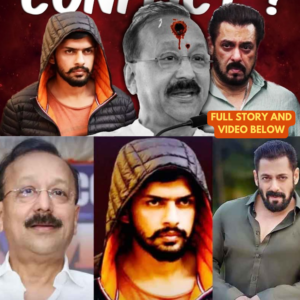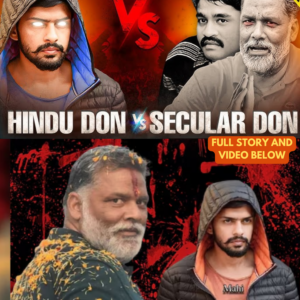Is even the police afraid of Lawrence Bishnoi? | Shubhankar Mishra | Deepak Sharma | Salman Khan
In a provocative interview from Tihar Jail, notorious criminal Lawrence Bishnoi shed light on the often-misunderstood dynamics of inmate treatment within one of India’s most infamous correctional facilities. This marks Bishnoi’s second public discussion from behind bars, where he asserts that he is unfazed by police or media scrutiny, a claim that raises eyebrows given his criminal background.
The Environment of Tihar Jail
Bishnoi’s insights into Tihar Jail reveal a facility that operates under stringent security measures designed to maintain order and prevent favoritism. He contends that the treatment of inmates—whether they are common criminals or high-profile individuals—is largely uniform. This assertion challenges the widely held belief that influential inmates receive special privileges.
Public Perception and Social Media Influence
Bishnoi’s case has taken an interesting turn in the digital age. He has garnered a significant following on social media platforms, where many view him as a sort of anti-hero. This phenomenon raises important questions about the influence of media narratives on public perception. Bishnoi’s portrayal as a ‘hero’ contrasts sharply with the grim reality of his criminal activities, including serious allegations that have garnered national attention.
“I see comments from people who idolize him, treating him like a celebrity,” remarked a crime reporter familiar with the case. This dichotomy between public admiration and the nature of his crimes presents a complex portrait of modern criminality and the societal factors that contribute to it.
Behavioral Insights from Within
According to various associates and reports, Bishnoi’s behavior in custody is surprisingly cooperative. He is described as obedient and respectful towards prison staff, adhering to the rules and avoiding any unnecessary trouble. This portrayal runs counter to the stereotype of high-profile inmates causing disruptions in prison environments.
“He’s not the typical troublemaker you might expect,” said one insider. “He understands the consequences of his actions and appears to want to avoid further complications.” Such behavior suggests a nuanced understanding of his situation, reflecting a calculated approach to navigating prison life.
Enhanced Security Measures
The prison administration has implemented a range of enhanced security measures to monitor high-profile inmates like Bishnoi. These include constant surveillance and body-worn cameras for staff, ensuring that every interaction is recorded. This commitment to oversight aims to prevent misconduct and maintain security within the facility.
“Every movement is tracked, every visitor is logged,” explained a prison official. “We have to ensure that there are no lapses in security, especially with inmates who have a history of influence outside these walls.” This proactive approach underscores the complexities of managing high-profile inmates, balancing their rights with the need for strict security protocols.
Conclusion: A Reflection on Justice and Society
Bishnoi’s interview provides a rare glimpse into the realities of life in Tihar Jail, challenging preconceived notions about inmate treatment and the nature of criminality. As public fascination with high-profile criminals continues to grow, it becomes essential to critically examine the narratives that surround them.
The case of Lawrence Bishnoi not only raises questions about the effectiveness of the criminal justice system but also reflects broader societal issues. It compels us to consider how media portrayal and public perception shape our understanding of crime and punishment in contemporary society.
In a world where social media can elevate a criminal to celebrity status, the need for informed discourse on these topics has never been more critical. The intersection of crime, media, and public perception will continue to influence the narratives surrounding figures like Bishnoi, leaving us to ponder the implications for justice and society at large.
.
.
.
FULL VIDEO
News
Amitabh Bachchan behaved badly with his daughter-in-law Aishwarya Rai | Amitabh IGNORE Aishwarya Rai
In recent weeks, a wave of speculation has emerged suggesting that all may not be well between former Miss World Aishwarya Rai and the iconic Bachchan family. This speculation has captured the attention of fans and the media, as rumors…
Amitabh gave a message to daughter-in-law Aishwarya Rai, said “No matter how your house is, it is yours”
Amitabh Bachchan, the iconic figure of Indian cinema, has a longstanding tradition of engaging with his audience through social media. He often shares reflections on his life, career, and personal philosophies. Recently, a particular post of his has stirred significant…
Salman Khan vs Lawrence Bishnoi | Why it is Happening? |
Salman Khan vs Lawrence Bishnoi | Why it is Happening? | The tension between Bollywood superstar Salman Khan and gangster Lawrence Bishnoi has become a hot topic in recent news. This clash is not just a simple feud; it embodies…
Lawrence Bishnoi Vs Pappu Yadav | Bishnoi Targets Anti-India Mafia?
In the ever-evolving landscape of India’s criminal underworld, a new chapter is unfolding, marked by the dramatic confrontation between notorious gangster Lawrence Bishnoi and the infamous Bihar don, Pappu Yadav. This rivalry has escalated recently, with Bishnoi’s gang issuing a…
LAWRENCE BISHNOI VS SALMAN KHAN, PAKISTANI PUBLIC REACTION AFTER NADEEM KHAN VIRAL VIDEO, REAL TV
The recent controversy involving Bollywood superstar Salman Khan and Lawrence Bishnoi has sparked intense discussions across communities, especially concerning allegations of animal cruelty. The speaker, representing a particular community, emphasizes that if there is evidence that Khan has harmed a…
LAWRENCE BISHNOI’S DIWALI GIFT TO PAPU YADAV LIVE, AFTER NADEEM KHAN & SALMAN KHAN, LATEST NEWS
In a recent live discussion, significant attention was drawn to the ongoing tensions surrounding Pappu Yadav and Lawrence Bishnoi, especially in light of recent developments involving prominent figures like Nadeem Khan and Salman Khan. The speaker began by addressing the…
End of content
No more pages to load











